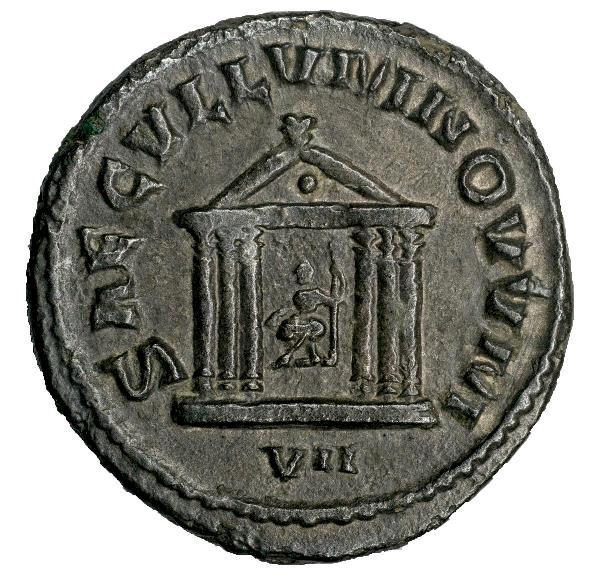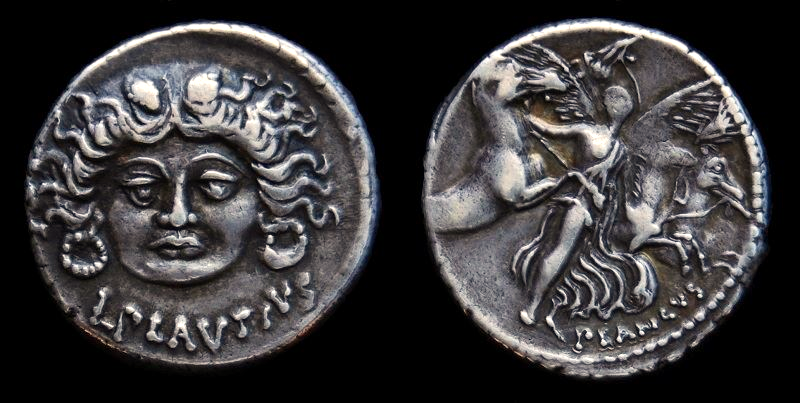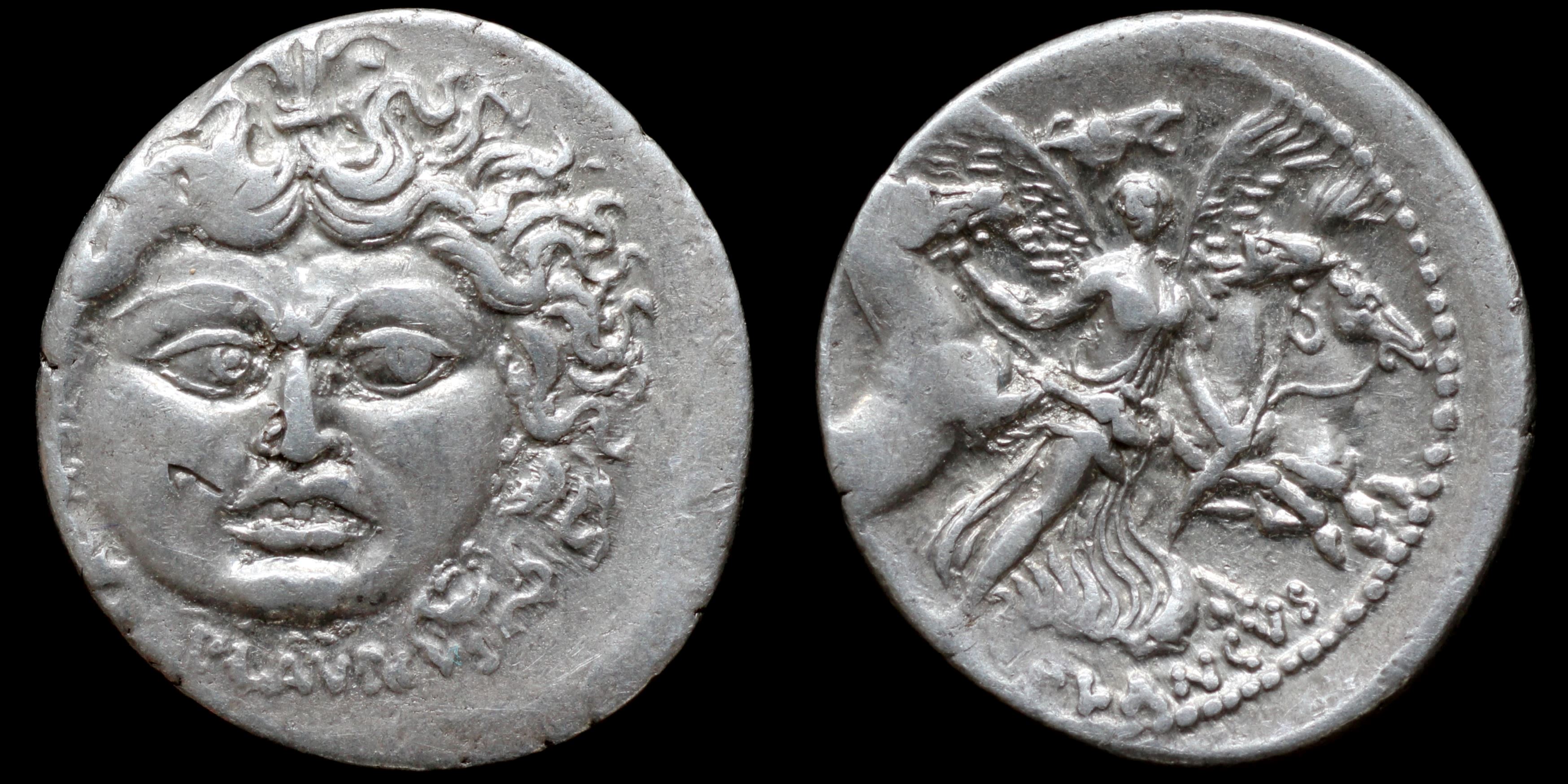Ok, so for some reason this ruler, mint, denomination or collection does not have a description yet - oops!
There are two possible explanations for this:
No description has been written yet
The property is incorrectly named
If the former, patience is key - this site covers thousands of entities, and all must have a manually created description written.
If the latter, try renaming the property - 'Domitian as Caesar' has no description, but 'Domitian' does.
There are two possible explanations for this:
If the former, patience is key - this site covers thousands of entities, and all must have a manually created description written.
If the latter, try renaming the property - 'Domitian as Caesar' has no description, but 'Domitian' does.


Obverse: Facing mask of Medusa with disheveled hair, coiled serpents at either side of face; L PLAVTIVS below.
Reverse: Aurora, winged and draped, flying right, head facing slightly left, holding reins and palm branch, conducting the four rearing horses of the sun; PLANCVS below.
Diameter:
18 mm
Die Orientation: 12 H
Weight: 4 g
Die Orientation: 12 H
Weight: 4 g
"This moneyer was adopted into the Plautia gens. In his 'Fasti', Ovid relates that during the censorship of C. Plautius and Ap. Claudius Caecus in 312 BC, the latter quarrelled with the tibicines (flute-players) and had them exiled to Tibur. As the people resented their loss, Plautius schemed to bring them back to Rome in the very early morning with their faces covered by masks, an event from his ancestry which the moneyer of this type chose to celebrate on his coinage. Hence, the depiction of Aurora is an allusion to their early morning arrival and the mask of Medusa to the concealment of their faces. This reverse was inspired by a specific ancient work of art, the painting "Victoria quadrigam in sublime rapiens" by Nicomachus of Thebes. This famous Greek work is believed to have been the personal property of Plautius Plancus at the time he commissioned the dies for this issue, to celebrate the victories of Julius Caesar in 48 and 47 BC."
"The commemoration of this event was already a part of the yearly calendar of Roman religious festivals with the Quinquatrus Minusculae, celebrated at Rome on the Ides of June, at which the tibicines processed through the city to the Temple of Minerva whilst wearing masks."
Provenance: CNG Electronic auction 404 (23 August 2017), lot 453. Ex Hirsch Nachf. 284 (26 September 2012), lot 2585.
Provenance: CNG Electronic auction 404 (23 August 2017), lot 453. Ex Hirsch Nachf. 284 (26 September 2012), lot 2585.
Crawford 453/1a

Obverse: facing head Medusa wearing hoop earrings; L·PLAVTIVS
Reverse: Aurora flying right with head slightly left conducting 4 horses; PLANCVS
Diameter:
19 mm
Die Orientation: -
Weight: 3.9 g
Die Orientation: -
Weight: 3.9 g
This moneyer was adopted into the Plautia gens. Sear suggests that the reverse type may be related to a picture by Nichomachus of Thebes which was placed in the Capitol by L. Munatius Plancus as a part of the celebrations of his Gallic triumph. In his Fasti, Ovid relates the origin of the festival of the lesser Quinquatria Minerva. He states that an aedile exiled Rome’s flute-players to Tibur, and that the moneyer’s adopted ancestor C. Plautius, who was consul that year, smuggled them back into Rome to appease the citizens. The flute-players wore masks to conceal their identities and this became a tradition of the annual festival.
Crawford 453/1c, SRCV I 429, Sydenham 959b, RSC I Plautia 14
(16).JPG)
Obverse: Head of Medusa facing, with coiled snake on either side; [L•PLAVTI]VS below
Reverse: Aurora flying right, conducting the four horses of the sun and holding palm frond; PLANCVS below
Diameter:
18 mm
Die Orientation: 4 H
Weight: 3.86 g
Die Orientation: 4 H
Weight: 3.86 g
No notes for this coin
Crawford 453/1a; CRI 29; RSC Plautia 15a
